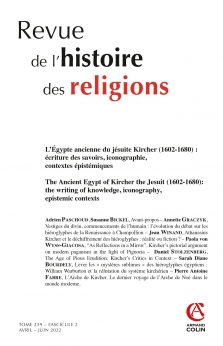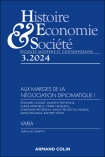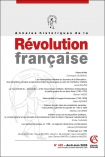
REVUE DE L'HISTOIRE DES RELIGIONS (2/2022)
Pour acheter ce numéro, contactez-nous
Recevez les numéros de l'année en cours et accédez à l'intégralité des articles en ligne.
La réputation de Kircher dans la République des Lettres ne lui survécut pas. Si l’on crédite volontiers Kircher d’avoir fondé les études coptes, il ne s’y intéressa en fait que modérément. C’est au déchiffrement des hiéroglyphes que Kircher voua le reste de son existence, conduisant l’égyptologie naissante dans une impasse. Bien qu’il s’appuyât sur un savoir considérable, Kircher subordonnait ses interprétations à la prisca theologia. Dans le sillage des théories renaissantes sur le symbolisme des hiéroglyphes, Kircher refusa à cette écriture le pouvoir de noter la langue des anciens Égyptiens, ouvrant la porte à toutes les spéculations. La méthode de Kircher sera ici illustrée et évaluée au travers de son interprétation de l’obélisque Pamphile.
Kircher’s reputation in the Republic of Letters did not survive him. While Kircher is readily credited with the founding of Coptic studies, he was only moderately interested in them. It was to deciphering hieroglyphics that Kircher devoted the rest of his life, leading the nascent field of Egyptology to a dead end. Despite relying on a considerable encyclopedia, Kircher subordinated his interpretations to the prisca theologia. In line with Renaissance theories on the supposedly exclusive symbolism of hieroglyphics, Kircher denied this writing the power to note the language of the ancient Egyptians, which opened the door to all manner of speculation. In this study, Kircher’s method will be illustrated and evaluated through his interpretation of the Pamphilius obelisk.

